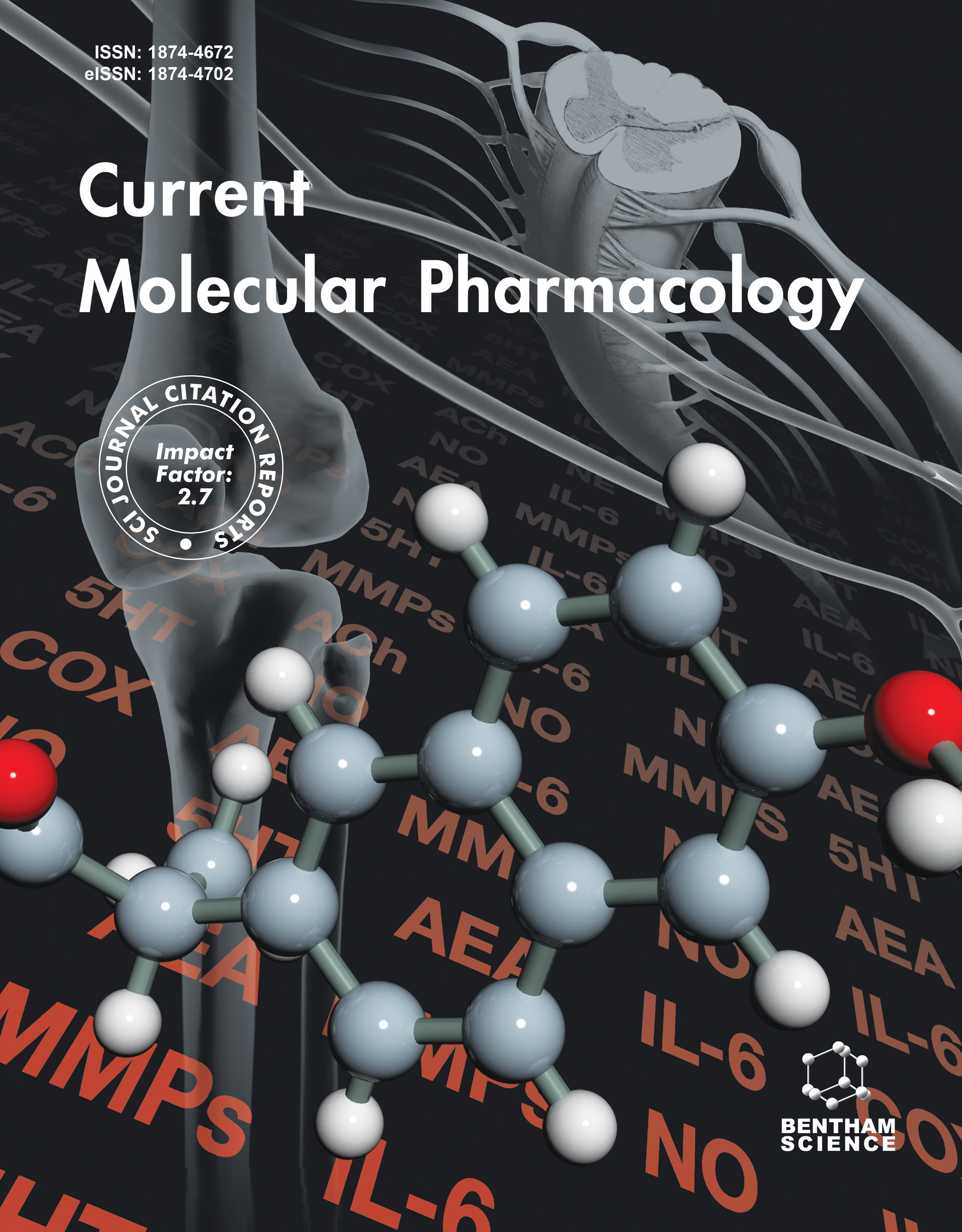- Home
- A-Z Publications
- Current Molecular Pharmacology
- Previous Issues
- Volume 2, Issue 3, 2009
Current Molecular Pharmacology - Volume 2, Issue 3, 2009
Volume 2, Issue 3, 2009
-
-
Estrogen Receptor Neurobiology and its Potential for Translation into Broad Spectrum Therapeutics for CNS Disorders
More LessEstrogens are hormones that modulate a diverse array of effects during development and adulthood. The effects of estrogen are mediated by two estrogen receptor (ER) isotypes, ERa and ERa, which classically function as transcription factors to modulate specific target gene expression and in addition regulate a growing list of intracellular signaling cascades. These receptors share protein sequence homology and protein-motif Read More
-
-
-
G Protein - Mediated Signaling: Same Receptor, Multiple Effectors
More LessAuthors: Andrew Woehler and Evgeni G. PonimaskinThe superfamily of G protein coupled receptors (GPCRs) comprises the largest group of cell surface receptors expressed by the human genome. Accordingly, these receptors are the target of a substantial portion of current pharmaceuticals. Over the past few decades there have been many substantial discoveries regarding GPCRs structure and function that have led to the current understanding of the complexity of the signa Read More
-
-
-
Molecular Mechanisms of Neuronal Histamine and its Receptors in Obesity
More LessAuthors: Takayuki Masaki and Hironobu YoshimatsuObesity is an important health problem because it is associated with diseases such as type 2 diabetes, hypertension, and hyperlipidemia in metabolic syndrome. The detail molecular mechanisms that underlie obesity have not been fully elucidated, and its therapeutic approach is of general interest. There is increasing evidence that obesity is under control of several factors in the brain and a number of studies have r Read More
-
-
-
Ligand-Gated Pentameric ion Channels, from Binding to Gating
More LessBy Gabor MaksayX-ray structures of molluscan acetylcholine-binding proteins and procaryotic proton-activated ion channels (ELIC and GLIC) enable us to model the ligand binding and activation mechanism of ligand-gated pentameric ion channels. Common versus distinct features can be deduced from the binding of agonists, antagonists and allosteric modulators in subunit interfaces of nicotinic acetylcholine, A-type γ-aminobutyric acid, gly Read More
-
-
-
Hypoxia and the Malignant Glioma Microenvironment: Regulation and Implications for Therapy
More LessAuthors: L. Oliver, C. Olivier, F. B. Marhuenda, M. Campone and F. M. ValletteGlioblastoma Multiforme (GBM) tumors are the most common type of brain tumors. These tumors are in general very malignant and can be characterized as rapidly progressive astrocytomas. The pathological characteristics of these tumors are exemplified by an active invasiveness, necrosis and a specialized form of angiogenesis, known as microvascular hyperplasia. These pathological features are thought to be du Read More
-
-
-
Can Colorectal Cancer be Prevented or Treated by Oral Hormone Replacement Therapy?
More LessAuthors: P. Li, J. E. Lin, S. Schulz, G. M. Pitari and S. A. WaldmanGuanylyl cyclase C (GCC) is the receptor specifically expressed by intestinal cells for the paracrine hormones guanylin and uroguanylin and diarrheagenic bacterial heat-stable enterotoxins. This tissue-specific receptor coordinates lineage-dependent regulation of epithelial homeostasis, and its disruption contributes to intestinal tumorigenesis. It coordinates regenerative and metabolic circuits by restricting the cell cycle a Read More
-
Most Read This Month
Article
content/journals/cmp
Journal
10
5
false
en


